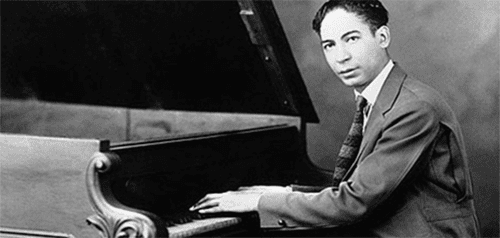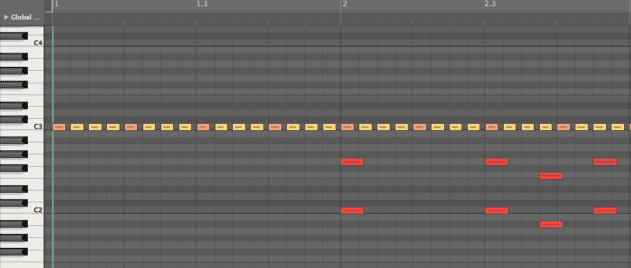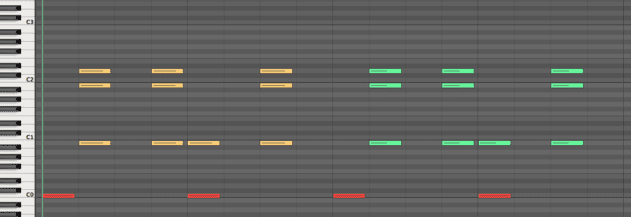Attack’s resident dance music theory expert Oliver Curry explains how emphasising off beats can change the feel of a groove.
In this edition of Passing Notes, we’re looking at syncopation – one of the fundamental techniques used to add movement and groove to any instrumental part of a track. We’ll take a look at a few examples of syncopation in action across various genres, then show how it can be used subtly or heavily in order to add an extra dimension to your music.
First, however, let’s define what we mean by syncopation. A rhythm is said to be syncopated when off beats are emphasised. The definition of syncopation varies from that of swing – which we discussed in a recent instalment of Passing Notes – in that swing describes the shifting of off beats by varying amounts, whereas syncopation describes accentuating them in some way but not necessarily affecting the timing. (Note that it’s also possible to use swing and syncopation simultaneously as well as separately.)
There are a number of ways in which syncopation can be added to a rhythm – it can be done with velocity, volume, timbre, interaction between different instrument parts, or by leaving gaps in a melody or rhythm line for emphasis.
‘Eye Of The Tiger’
Our first example might not be the coolest, but it’s the perfect demonstration of syncopation in action: we’re going to examine the intro to Survivor’s ‘Eye Of The Tiger’:
It’s a convenient example because the guitar plays muted 16ths, clearly accentuating the first 16th of each beat (highlighted in orange on the piano roll below, where the yellow notes represent the quieter guitar notes).
When the other guitar and drums come in, we can clearly hear that they accentuate off beats in addition to the downbeats played by the first guitar:
Audio Player‘Kansas City Stomps’
For a more complex example in an entirely different style, let’s check out a piece which uses both swing and syncopation in vast quantities: Jelly Roll Morton’s 1928 floor-filler, ‘Kansas City Stomps’.
The timing of the piece is certainly heavily swung, but the incredible rhythm of this track is hugely exaggerated by the syncopation.
Listen to the sparse clarinet line that comes in at 0:24 and how it works in conjunction with the off-beat snares. Less is most definitely more in this instance: the staccato notes at the beginning of the solo aren’t just played with great rhythm, it’s the sparseness of the melody along with the timing that really creates the syncopated groove. More notes, no matter how swung, would quite likely detract from the rhythm.
Levon Vincent – ‘Games Dub’
Bringing things slightly more up to date, let’s check out the sparse, atmospheric intro of ‘Games Dub’ by Levon Vincent.
In our Passing Notes feature on disco chords, we looked at ‘Lost In Music’ by Sister Sledge, and how the piano chords playing the quarter beats either side of the off beat gave the snare more space, as well as giving the piano line a catchy syncopation.
Similarly, the synth chords in ‘Games Dub’ accentuate quarter notes that are off the beat rather than the downbeats on which the kick sounds. We can hear how this interaction creates a syncopated rhythm:
Audio PlayerWhilst there are other factors at work creating the rhythm of the chords (including a filtered delay), this is how the chords sound in the track, with the kicks in red:
This syncopated rhythm creates the underlying driving groove that continues throughout the track.
Next, let’s create our own example to show how it works in practice.
Further example
Finally, let’s put together a quick example of our own. We’ll start with a basic kick and clap pattern then layer some percussion parts over the top:
Audio PlayerThe beat sounds fairly straight, but as we begin to add further parts accentuating different beats, the rhythm becomes more syncopated, starting with a simple bassline:
Audio PlayerThen, a sampled chord:
Audio PlayerWe can hear how the sparseness of these parts adds to the rhythm of the overall track.
Half way through the following clip, we switch from straight timing to 66% swing (16E in Logic), to show how the addition of swing affects the syncopated rhythm.
Audio PlayerUsing the example of the sampled chord line above, this means that any notes falling on the even-numbered 16ths (highlighted in red) now lie 66% of the way between the two odd-numbered 16ths (shown with the green lines), instead of the standard half-way or 50%.
The results of this simple approach are incredibly effective. It’s one of the fundamental techniques in virtually all musical genres, but one which creates vast creative potential in dance music thanks to the tools we have at our disposal. Velocity, automation of synth parameters, effects and countless other methods can be employed to emphasise off beats in different instrument and drum parts. When combined – especially with swing – the impact on the groove of a track can be huge.







01.46 AM
What a ridiculous track in the making!
Thanks a lot for this one though, really.
Things like this are always felt and know you need in your tracks, but it just helps so much actually having someone/mentor say ‘Ok, this is this – this is what you have been hearing here’.
03.44 PM
Thank you so much for all these great articles!
04.59 PM
Another excellent article in an excellent series!!
12.21 AM
Passing Notes is the best! you can get sound design tips anywhere, but practical DAW style music tips are so hard to come by
01.33 AM
Love’em all
06.53 PM
Nice i have been doing this for a while in my last tracks without realising this is a technique,i just figure it out while i was programming a 303 playing with the accent on the off bit is a relief to know i am heading in the right direction
02.15 AM
Really learned allot from this passing notes as always. I am so happy I found attack magazine. Since I have I have actually started to get the hang of sound design and programming. I spent the last few years messing around with Ableton and getting frustrated that I couldn’t make the sounds I would hear in my dreams but it’s all starting to come together and I am finally improving every day. Thanks so much mate for putting together these tutorials they are brilliant and appreciated.
10.01 PM
I just discovered Attack Magazine yesterday by accident and WOW!!!!!, talk about treasure. I started checking out how to make a decent bassline and studied the various articles on house music. Its all way over my head since I am new to digital music but its got me pretty excited. This online magazine and its articles is going to save me years of fumbling around on my own. Today, I’m going to play around with a subtractive synth and some compression and see what I get:))))